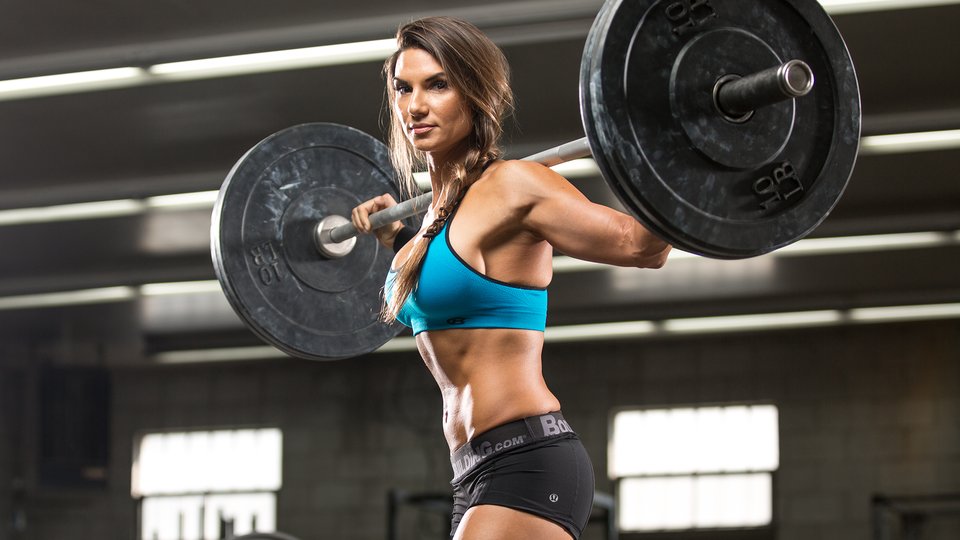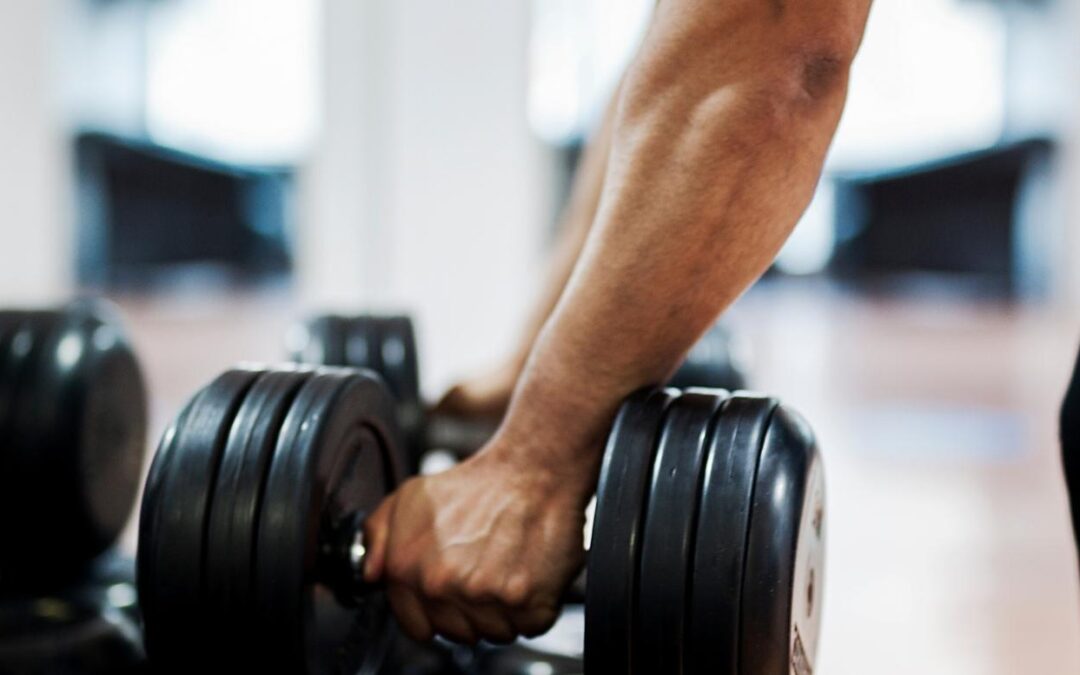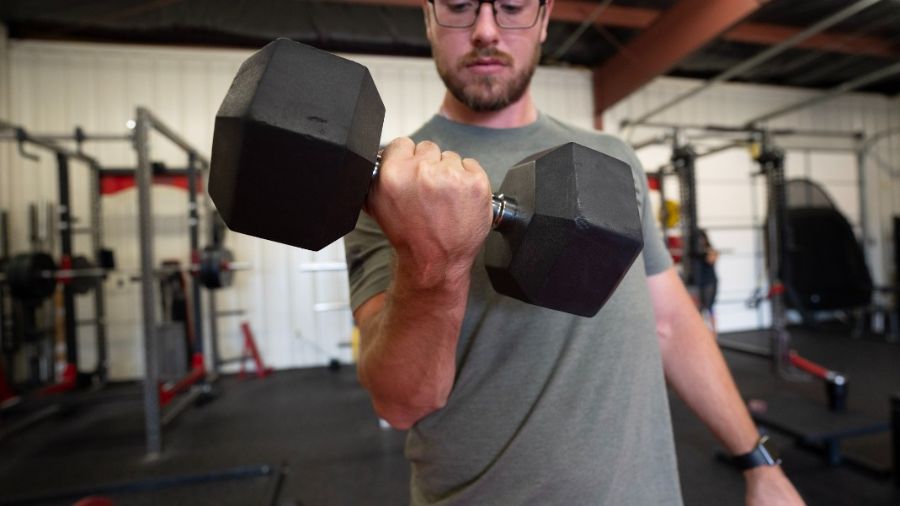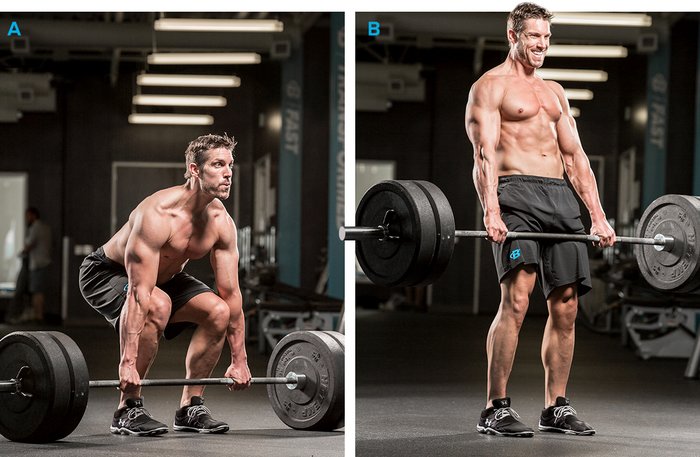Importance of Heavy Weight Workouts for Muscle Building

When it comes to building muscle, heavy weight workouts are essential. Lifting heavy weights stimulates muscle growth by causing micro-tears in the muscle fibers, which then repair and grow stronger. This type of resistance training also increases the production of testosterone and growth hormone, both of which play a key role in muscle development. Additionally, heavy weight workouts help improve bone density and increase metabolism, making it easier to burn fat and maintain a lean physique. By incorporating heavy weight exercises into your routine, you can sculpt your body and achieve the muscular physique you desire.
Benefits of Heavy Weight Workouts

Heavy weight workouts offer numerous benefits when it comes to muscle building. Lifting heavy weights puts your muscles under significant stress, which leads to micro-tears in the muscle fibers. This triggers the body's repair process, resulting in stronger and larger muscles. Additionally, heavy weight training stimulates the production of testosterone and growth hormone, both of which are essential for muscle growth. Moreover, these workouts increase bone density, improving overall strength and reducing the risk of osteoporosis. Heavy weight exercises also boost metabolism, helping you burn more calories even at rest. Incorporating heavy weight workouts into your routine can help you achieve a sculpted physique and enhance your overall strength and functionality.
Safety Tips for Heavy Weight Training

When engaging in heavy weight training, it's crucial to prioritize safety to prevent injuries and ensure effective workouts. Here are some essential safety tips to keep in mind:
- Warm-up: Always start with a dynamic warm-up to increase blood flow and prepare your muscles for the heavy lifting ahead.
- Proper form: Maintain proper form throughout each exercise to avoid strains and injuries. Focus on technique rather than lifting heavier weights.
- Gradual progression: Gradually increase the weight you lift over time to allow your muscles, tendons, and ligaments to adapt and minimize the risk of overexertion.
- Use a spotter: When lifting heavy weights, have a spotter nearby who can assist you if needed, especially during exercises like bench press or squats.
- Listen to your body: Pay attention to any pain or discomfort during your workouts. If something doesn't feel right, stop immediately and consult a professional if necessary.
Remember, safety should always be a priority when incorporating heavy weight training into your fitness routine.
Squats

Squats are one of the most effective exercises for building muscle and strength in your lower body. They target multiple muscle groups, including your quadriceps, hamstrings, glutes, and calves.
To perform squats correctly, start by standing with your feet shoulder-width apart. Keep your back straight and chest lifted as you slowly lower your body into a sitting position, pushing your hips back and bending your knees. Make sure to keep your knees aligned with your toes and avoid letting them cave inward.
Variations of squats can help target specific muscles even more intensely. Some popular variations include front squats, goblet squats, and Bulgarian split squats.
Incorporating squats into your heavy weight workout routine will help you build strong and powerful leg muscles while improving overall functional strength.
Proper Form and Technique for Squats
When performing squats, it's crucial to maintain proper form and technique to maximize the benefits and minimize the risk of injury. Here are some key points to keep in mind:
- Start with your feet shoulder-width apart and toes slightly turned out.
- Keep your back straight and chest lifted throughout the movement.
- Engage your core muscles by drawing your navel towards your spine.
- As you lower your body, push your hips back and bend your knees, keeping them aligned with your toes.
- Aim to go as low as you comfortably can while maintaining good form.
- Push through your heels as you return to the starting position.
- Avoid rounding your back or letting your knees cave inward.
By practicing proper form and technique, you'll effectively target the desired muscle groups and reduce the risk of injury during squats.
Variations of Squats for Building Muscle

There are several variations of squats that can help you build muscle and add variety to your workout routine. Some popular variations include:
- Front Squats: In this variation, the barbell is placed across the front of your shoulders instead of on your back. This puts more emphasis on your quadriceps and core muscles.
- Sumo Squats: In sumo squats, your feet are wider apart and your toes are turned out at a greater angle. This targets your inner thighs and glutes.
- Bulgarian Split Squats: This exercise involves placing one foot behind you on a bench or elevated surface while performing a squat with the other leg. It helps to isolate each leg individually and works your glutes, quads, and hamstrings.
- Goblet Squats: Holding a weight or kettlebell in front of your chest, you perform a squat. This variation targets your quads, glutes, and core muscles while also challenging your upper body strength.
Incorporating these variations into your squat routine can help you target different muscle groups and keep your workouts challenging and effective.
Deadlifts
The King of Muscle Building Exercises
Deadlifts are often referred to as the king of muscle building exercises, and for good reason. They work multiple muscle groups simultaneously, making them one of the most effective compound exercises you can do. Deadlifts primarily target your lower back, glutes, hamstrings, and quads, but they also engage your core and upper body muscles.
To perform a deadlift, start with your feet hip-width apart and the barbell on the ground in front of you. Bend at your hips and knees, keeping your back straight, and grip the barbell with an overhand or mixed grip. Stand up by driving through your heels and squeezing your glutes at the top.
Proper form is crucial when performing deadlifts to prevent injury. Keep your back straight throughout the movement, engage your core for stability, and lift with controlled movements.
By incorporating deadlifts into your heavy weight workout routine, you'll build strength in your entire posterior chain while also improving overall muscle growth and power.
Deadlifts: The King of Muscle Building Exercises

Deadlifts are often hailed as the king of muscle building exercises, and it's easy to see why. This compound movement targets multiple muscle groups simultaneously, making it incredibly efficient for building strength and muscle mass. Not only do deadlifts work your lower back, glutes, hamstrings, and quads, but they also engage your core and upper body muscles for stability and balance.
By incorporating deadlifts into your heavy weight workout routine, you can experience significant gains in overall muscle growth and power. However, it's crucial to maintain proper form throughout the exercise to prevent injury. Keep your back straight, engage your core for stability, and lift with controlled movements.
Whether you're a beginner or an experienced lifter, adding deadlifts to your routine can take your muscle-building journey to the next level.
Common Mistakes to Avoid During Deadlifts
When performing deadlifts, it's important to be aware of common mistakes that can compromise your form and increase the risk of injury. Here are some key errors to avoid:
- Rounding your back: This is one of the most common mistakes during deadlifts. Keep your back straight and maintain a neutral spine throughout the movement.
- Using your arms instead of legs: Deadlifts should primarily engage your legs and hips, not your arms. Focus on driving through your heels and using your lower body strength to lift the weight.
- Lifting with jerky movements: Smooth and controlled movements are crucial during deadlifts. Avoid yanking or jerking the weight off the ground, as this can strain your muscles and joints.
- Neglecting proper breathing technique: Breathing plays a significant role in maintaining stability during deadlifts. Inhale deeply before lifting and exhale forcefully as you lift the weight.
By avoiding these common mistakes, you can perform deadlifts safely and effectively, maximizing their muscle-building benefits.
Bench Press

The bench press is a classic exercise that targets the muscles in your chest, shoulders, and triceps. It's a compound movement that allows you to lift heavy weights and build upper body strength. To perform the bench press correctly, lie flat on a bench with your feet planted firmly on the ground. Grip the barbell slightly wider than shoulder-width apart and lower it down to your chest, keeping your elbows tucked in. Push the barbell back up until your arms are fully extended. Remember to breathe properly and maintain control throughout the movement. The bench press is a foundational exercise for building a strong upper body and should be included in any heavy weight training routine.
Techniques for Effective Bench Pressing

To perform the bench press effectively, it's important to focus on proper technique. Here are some key techniques to keep in mind:
- Set up correctly: Lie flat on the bench with your feet firmly planted on the ground. Position your eyes directly under the barbell.
- Maintain a stable grip: Grip the barbell slightly wider than shoulder-width apart, with your palms facing forward. Keep your wrists straight and elbows tucked in.
- Engage your core: Before lifting, engage your core muscles by squeezing your abs and glutes. This will provide stability and support during the movement.
- Lower the barbell controlled: Lower the barbell down to your chest in a controlled manner, keeping your elbows at a 45-degree angle from your body.
- Push through your heels: As you push the barbell back up, focus on pushing through your heels and driving force from your legs.
Remember to start with lighter weights and gradually increase as you gain strength and confidence in your form.
Benefits of Bench Press for Upper Body Strength

The bench press is a highly effective exercise for building upper body strength. Here are some key benefits of incorporating the bench press into your workout routine:
- Chest development: The bench press primarily targets the pectoralis major, the largest muscle in the chest. Regular bench pressing can help increase chest size and improve overall upper body aesthetics.
- Triceps and shoulder strength: Along with the chest, the bench press also engages the triceps and anterior deltoids (shoulder muscles). This compound movement helps strengthen these muscles, improving pushing power and stability.
- Functional strength: The bench press mimics pushing movements that are commonly performed in daily activities and sports. By strengthening the muscles involved in these movements, you can enhance your functional strength and performance.
- Bone density: Weight-bearing exercises like the bench press stimulate bone growth and improve bone density, reducing the risk of osteoporosis.
To maximize the benefits of bench pressing, it's important to use proper form, progressively increase weight, and incorporate variations such as incline or decline bench presses.
Pull-Ups

Pull-ups are an excellent exercise for building upper body strength and targeting multiple muscle groups at once. They primarily work the latissimus dorsi, or lats, which are the large muscles in your back. Pull-ups also engage the biceps, forearms, shoulders, and core muscles. By incorporating pull-ups into your workout routine, you can develop a strong and balanced upper body.
To perform a pull-up, start by gripping a pull-up bar with your palms facing away from you. Hang with your arms fully extended, then use your back and arm muscles to pull your body up until your chin is above the bar. Lower yourself back down with control and repeat for desired repetitions.
To target different muscle groups, try using different grips such as wide grip, close grip, or chin-ups. As you progress, you can also add weight to increase the intensity of the exercise. Remember to maintain proper form throughout the movement and avoid swinging or using momentum to complete the exercise.
Incorporate pull-ups into your heavy weight workout routine to build a strong and sculpted upper body.
Types of Pull-Up Grips for Muscle Targeting
To target different muscle groups and maximize your pull-up workout, you can use various grips. Here are three common types of pull-up grips and the muscles they engage:
- Wide Grip: This grip involves placing your hands wider than shoulder-width apart on the bar. It primarily targets the lats, helping to build a wide and defined back.
- Close Grip: With this grip, your hands are positioned closer together, slightly narrower than shoulder-width apart. It emphasizes the biceps and forearms while still engaging the lats.
- Chin-Up Grip: In a chin-up grip, your palms face towards you with your hands shoulder-width apart or slightly closer. This grip puts more emphasis on the biceps and also works the lats.
By incorporating different grips into your pull-up routine, you can effectively target specific muscle groups for a well-rounded upper body workout.
Pull-Up Progressions for Muscle Growth
In order to continuously challenge your muscles and promote muscle growth, it's important to progress in your pull-up workouts. Here are some pull-up progressions that can help you build strength and increase muscle mass:
- Assisted Pull-Ups: If you're unable to do a full pull-up yet, start by using an assisted pull-up machine or resistance bands to help support some of your body weight.
- Negative Pull-Ups: Begin at the top of the pull-up position and slowly lower yourself down, focusing on controlling the descent. This eccentric movement builds strength and prepares you for full pull-ups.
- Weighted Pull-Ups: Once you're able to do multiple sets of regular pull-ups, you can add additional weight by wearing a weighted vest or holding a dumbbell between your feet.
Remember to always maintain proper form and gradually increase the intensity of your workouts to avoid injury. With consistent practice and progression, you'll see impressive gains in your upper body strength and muscle development.
Conclusion

Incorporating heavy weight workouts into your fitness routine is essential for building muscle and achieving your desired physique. Squats, deadlifts, bench press, and pull-ups are all excellent exercises that target multiple muscle groups and promote overall strength and growth. By consistently challenging yourself with progressive overload and maintaining proper form, you can maximize your results and avoid injury. Remember to create a balanced workout routine that includes a variety of exercises to ensure that all muscle groups are targeted. With dedication, consistency, and the proper nutrition, you can sculpt your body and achieve impressive muscle growth. So grab those weights, push yourself to new limits, and watch as your muscles transform before your eyes!
Creating a Balanced Heavy Weight Workout Routine
To achieve optimal muscle growth and avoid overworking specific muscle groups, it is essential to create a balanced heavy weight workout routine. This means incorporating exercises that target different muscle groups and ensuring proper rest and recovery. In addition to the essential exercises mentioned earlier, such as squats, deadlifts, bench press, and pull-ups, consider including other compound movements like lunges, overhead presses, and rows. You can also add isolation exercises like bicep curls or tricep extensions to target specific muscles. Aim for a mix of heavy weight lifts with lower reps and lighter weights with higher reps to challenge your muscles in different ways. Remember to listen to your body and adjust your routine as needed for optimal results.
FAQs about Muscle Building and Heavy Weight Workouts
Q: How often should I do heavy weight workouts for muscle building?
A: It is recommended to train each muscle group 2-3 times per week, allowing for proper rest and recovery between sessions.
Q: Can heavy weight workouts help with fat loss?
A: Yes, heavy weight workouts can increase muscle mass and boost metabolism, leading to greater calorie burn even at rest.
Q: Should I lift as heavy as possible every time?
A: It's important to challenge yourself with heavy weights, but also prioritize proper form and technique to prevent injury.
Q: Is cardio necessary for muscle building?
A: While cardio can be beneficial for overall health, it's not essential for muscle building. Focus on strength training and a balanced diet.
Q: How long does it take to see results from heavy weight workouts?
A: Results vary depending on individual factors such as genetics and consistency. Generally, noticeable changes can be seen within a few months of regular training.
